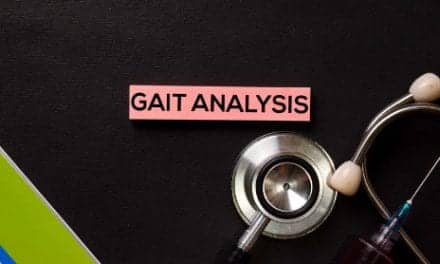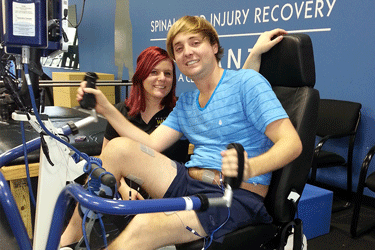Facilities large and small are dealing with the realities of difficult economic times. As wish lists give way to more pressing needs, decision makers will be looking for deals and hard evidence that the products they buy actually work. Through it all, the professionals in this month’s Q&A vow to maintain their commitment to patients.
Among the participants in this interview are Robert Babb, PT, MBA, founder and practicing physical therapist at the Physical Therapy & Wellness Institute, Lansdale and Quakertown, Pa; Bruce A. Brasser, RN, MSN, MBA, vice president of clinical services and risk manager, Mary Free Bed Rehabilitation Hospital, Grand Rapids, Mich; Kenneth R. Hosack, MA, director of provider relations at Craig Hospital, Englewood, Colo; Ellen Severe, OTR, director of occupational therapy at Craig Hospital; and Kevin Stone, MD, founder of The Stone Clinic, San Francisco.
Rehab Management (RM): What type of facility do you have and what are your patient demographics?
Robert Babb, PT, MBA: We are a three-clinic outpatient orthopedic clinic. Mean age is 44. Payor mix for our physical therapy service is 64% private insurance, 12% work injuries, 10% auto accidents, 8% Medicare, and the rest self-pay or pay through health plans.
Bruce A. Brasser, RN, MSN, MBA: We are an 80-bed inpatient hospital in Grand Rapids, Mich, with four primary inpatient programs: spinal cord injury, brain injury, stroke, and pediatrics.
Kenneth R. Hosack, MA: At any one time, we have about 55 patients with spinal cord injury and about 25 to 30 with traumatic brain injury. As a nonprofit, we have a separate 501(c)(3) foundation that is the fund-raising part of the hospital.
There is a large group of 18- to 25-year-olds, and then there is a group of 55- to 65-year-olds who have fallen. So that while the average age is 38, there is a wide range. In general, it’s a young people’s population and almost 100% trauma as opposed to neurological issues. Approximately 50% are motor vehicle accidents, falls at 20%, and the third biggest category is sports-related injuries—the largest of which is diving accidents.
Kevin Stone, MD: We have a referral practice seeing a mixture of athletes, weekend warriors, and people with arthritis. People fly to our clinic from all over the world for cartilage transplantation because we developed a technique for replacing meniscus and articular cartilage in people who have arthritis—helping prolong the time before they would need a total knee replacement.
RM: What types of therapists do you have on staff, and how many do you have of each?
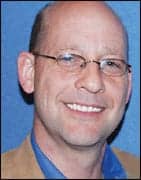 |
| Robert Babb |
Babb: We currently have six full-time PTs and three part-
timers. We are always on the lookout for PTs who are empathetic, quality driven, and use the human and physical resources of the clinic to create a great outcome. Right now, our mission and principles are perfectly aligned with PTs with an accountability focus for their patients’ outcomes and use of clinical resources.
Brasser: We have probably 90 full-time employees for our therapy staff—between our inpatient and outpatient therapy centers, including PTs, OTs, speech, and recreational therapy. Our outpatient center sees approximately 45,000 therapy visits per year.
Hosack: They are called the interdisciplinary team. The team consists of the physician, nurses, physical therapy, occupational therapy, speech language pathology, clinical psychology, neuropsychology, respiratory therapy, therapeutic recreation, patient and family service counselors, dietary, a chaplain, nurse educators, and, of course, the patient and family are the center of the team. We very much practice the interdisciplinary model.
Craig Hospital has approximately 525 full-time employees, and that’s for 80 inpatients and about 50 or so outpatients. So we have a favorable staff-to-patient ratio. We have approximately 30 or so OTs with the same number of PTs, and about 12 to 15 speech pathologists with more than 25 respiratory therapists. And we have about 10 full-time recreation therapists, which is kind of unheard of in the industry today.
Stone: We have four full-time PTs, one part-time PT, a strength and conditioning coach, an MRI tech, a nurse practitioner, and a physician assistant.
RM: How will current economic conditions affect your capital purchasing decisions in the new year?
Babb: We believe next year will be a banner year for small businesses looking to increase their market share. While other small practices may take a step back in purchases, we believe that it will be a year for us to propel ourselves forward through purchases of less costly equipment and the addition of services to our two lines of service (physical therapy and fitness).
With so many of our patients “electing” to come to us, we will be forced to demonstrate our skills in decision making and high levels of evidence-based care. Patients will be making decisions that will test our abilities to get them better, and their ability to afford our services.
The more we can align our human and physical resources toward their goals and expectations, the more likely they are to afford our services. Patients will need to see that use of human and physical resources exceeds what they can do at home. Any therapist asking a patient to perform a 5-pound straight leg raise will lose that patient to a home program. If the patient can do more, if their goals are to do more, and you have the physical resources to do more, your practice will do well in 2009.
Your physical resources should be updated, well maintained, and properly utilized. Capital purchases should be aimed at utilization, reimbursement, footprints, costs associated with the product, and bring-backs to the clinic, including reimbursement, new patients, and membership. This is an important topic because you and your therapy staff will determine your practice success this year by creating programs to meet the clinical goals balanced with the patient expectations, while maximizing the use of the clinic’s physical resources.
Brasser: We will scrutinize our capital expenditures carefully to ensure that all equipment is needed for our fundamental business of patient care. We have a 3- to 5-year capital plan that anticipates replacement and new equipment. We are not going to rely on the plan to guide our purchasing. We are going to assess the needs of our patients in our clinical programs.
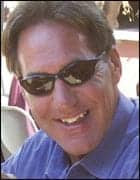 |
| Kenneth Hosack |
Hosack: Craig Hospital is in a fortunate position in that our beds stay essentially full with little marketing. For the most part, we have not seen any of the effect of the economy on our patient load. It’s conceivable that, for example, in the building trades, if the economy does not support commercial or residential housing, we could see fewer workers falling off of scaffolds. So far, we have not seen that, but it’s possible the economy could result in fewer catastrophic injuries, which could affect the economics of the hospital, which could affect the economics of purchasing equipment.
The employer-based health plans have gradually decreased the inpatient rehabilitation and durable medical equipment (DME) benefit. If a patient has a 60-day inpatient benefit and a $3,500 DME benefit, and he is a quadriplegic who needs a wheelchair that is $18,000 to $25,000—then they need to pay for that out of pocket, or we need to find money through the Craig Hospital Foundation.
Ellen Severe, OTR: We are being good stewards of our money. We don’t have a freeze or anything, but we really need to project if we need it immediately or whether we can do without it for now. The economy could also lead to more of our patient population being underinsured, which could affect the ability to pay and the length of stay.
Stone: Our major capital items are MRI and digital x-ray, which we have. For expiring leases or service contracts, efforts will be made to negotiate those at lower rates. Our purchasing of braces and other hard goods will shift to more just-in-time, rather than inventorying—which is something we all probably should have done a while ago. Certainly, the economic times have pushed us to be much more efficient on expenditures.
RM: What are the factors in deciding which brands to carry?
Babb: Search for quality equipment that you and your customers are familiar with, that doctors are familiar with, and that your staff will use. I am partial to brands that have been in the market for more than 15 years and have not been sold and resold as units or spin-offs from other companies. For instance, there are several ultrasound units that I will only buy, and several strength lines I will only look at.
Brasser: We are part of a purchasing group, so that drives our pricing decisions. Price is important, but not as important as meeting the service needs. Our first priority is the service needs of our patients, and the opportunity to add efficiencies to our care processes. When multiple products may meet that need, we are going to be looking at price as well as references from our colleagues at other rehabilitation hospitals that may be using that equipment. That ability to make contact with others and check references is important to us.
Hosack: We have seen a lot of companies and equipment ideas come and go. We are open to new ideas, and we stay acutely aware of what is out there in the marketplace. We meet often with different vendors, but the processes of evaluating the efficacy, durability, and cost—whether [equipment] is FDA approved and will be reimbursed by insurance—are long, thoughtful processes before we recommend anything to our patients. We can try people, for example, in different wheelchairs and other pieces of equipment.
The various departments and directors meet and say what equipment they need, and what we need to upgrade. They then will put those equipment requests into a capital budget that is separate from the operations budget. If the capital item is more than $1,000, then it’s in the capital budget because the financial people can declare depreciation on items over $1,000.
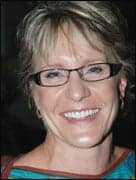 |
| Ellen Severe |
Severe: Patients come in with just enough information off of the Internet to be dangerous. They have preconceived notions about what they want and need. To educate them appropriately, we do have a lot of vendors come through. We as an interdisciplinary team have stringent standards when determining what is quality equipment. One of the biggest factors is a track record. We don’t always get the latest and greatest. We want to deal with manufacturers who have solid, stable finances. We want a report on their product recalls and breakdowns. We want to know that track record. We have an opportunity to get therapy equipment here that we can try before we purchase.
Stone: One good example where we are going to see a lot of price competition is visco supplementation. Other than Synvisc, most of the brands are equivalent based on the data and literature. So that is a good example of where we can get the companies to compete on price—and that benefits the patient.
RM: Among therapists and decision makers, what do you think is the biggest mistake that is typically made when making final purchasing decisions?
Babb: Going with the trends. For instance, purchasing a $5,000 kit to create a histological response to soft tissue is not necessary if you can get the same response using a reflex hammer. Pay attention to the trends, but always fall back on the foundations of science to make your decisions.
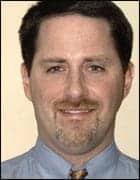 |
| Bruce Brasser |
Brasser: One of the things we have learned is to rely on direct conversations with colleagues and other organizations to learn about the practical value of equipment. Don’t just rely on the marketing materials that you receive. We do not make a significant purchase without a face to face or at least a telephone conversation with our colleagues. I’m not sure if it is routinely done everywhere else, but it is something we rely on.
Severe: We really want equipment that the patients want, but sometimes patients will get on the Internet and expect a certain piece of equipment that really does not meet their needs. We are diligent at looking at what our mission is, and we have plenty of vendors coming in trying to sell us [their products]. We don’t buy based on an hour and a bit of hands-on time. One piece of expensive equipment we decided not to purchase based on the lack of outcome studies. It’s a great piece of equipment, but do we have the space and will it change the outcomes? But this company has yet to prove that the outcomes are there.
Stone: The number one mistake is not price shopping. Number two is not demanding longer terms. And number three is overpurchasing. It’s difficult in a medical practice to judge demand for certain items because you have no control over your patient mix month to month. You have general trends, but 1 month you might see more shoulders than knees, and use of certain items changes.
RM: What are some of your best recent purchases, and what are your short- and long-term equipment needs?
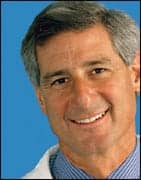 |
| Kevin Stone |
Stone: We purchase tissues for tissue transplantations, and in our view there are only a few high-end, high-quality suppliers—but there is price competition among them. And we will do less inventorying and more just-in-time.
Brasser: In our growing spinal cord injury program, we continue to use the body weight-supported treadmill system. If there is significant demand, we may purchase an additional system for body weight-supported treadmill training. We use the Swiss-made Giger MD system, and we are expanding the use of that throughout our spinal cord efforts and other programs, where appropriate. We are really evaluating demand in an overall shrinking rehabilitation market.
Hosack: We also have Guldmann lifts, for example, for every treatment area. Our nurses and therapists were experiencing back injuries, so that’s another area where we are strong. That was a sizable capital investment, but best for the safety of our patients and staff.
We recently unveiled our Mike Utley terrain park, which is essentially an obstacle course of gravel, cobblestone, ramps, steps, and a variety of bumps—and it’s right here on campus.
Severe: On the horizon, and this is a “want”—there are chairs on the horizon that can be operated with a thought. They are not in existence yet, but it’s an exciting possibility. People are thinking about something specific, and researchers are actually being able to map the brain, and determine that if you think about wiggling your thumb, it’s going to make the mouse move right.
The wants I have for Craig Hospital are probably different than the general population, because we are blessed to have a foundation, and we are blessed to have the ability to have equipment here. We have a fleet of wheelchairs from vendors such as Invacare and Pride Mobility that will change out and give us their newer versions every year, so that we have the chairs that can tolerate bariatrics. Ramps, for example, are so durable that we already have them. If one breaks, we will replace it.
RM: Do you plan on buying any beds, lifts, ramps, treatment tables, gait and balance devices, or vibrating Power Plates (for circulation, muscle tone, and balance) in the new year?
Babb: No. I plan on getting two therapists vestibular-trained in April, but will not purchase any equipment for this until I better understand the equipment needs.
Brasser: We currently have ceiling-track lift systems in many of our hospital rooms, but are looking to expand that. We had tentative plans to purchase 15 more ceiling-track lift systems, but we put that purchase on hold.
We will continue to upgrade our fleet of driver’s rehabilitation vehicles. At some point we are going to upgrade our beds, but they are functional now. [Also] one of our therapists has talked about purchasing the vibrating Power Plate.
For stroke patients, we have been continuing to purchase an upper extremity prosthesis to increase function of hand muscles. Our therapists have been using this with good patient outcomes. We may purchase more in the next year or two.
Severe: We have purchased a group of functional electrical stimulation bikes, and they have been really important in our marketing and for patients to exercise their lower extremities. It is not for recovery, and we make sure the patients understand that. It is more for circulation, bone density, and cardiovascular purposes.
The population is growing up with the computer and its immediate feedback. Our clients are coming in with that knowledge base and expectation. I do feel like robotics, biofeedback, and computer-based tracking and progress are the future.
Ultimately, people are not going to go home and have all the bells and whistles. So we want it to be doable, practical, achievable, and affordable for our patients. So less equipment is better. It’s about being as independent as possible and getting back to your life.
Greg Thompson is a contributing writer for Rehab Management. For more information, contact .




